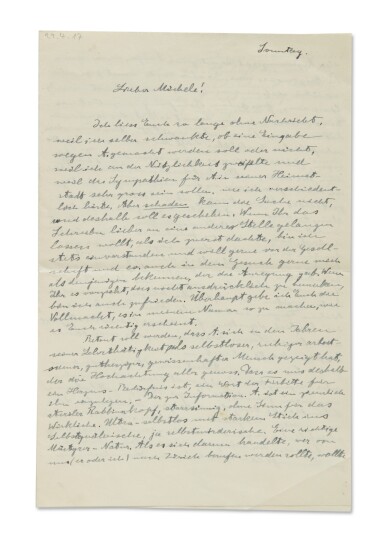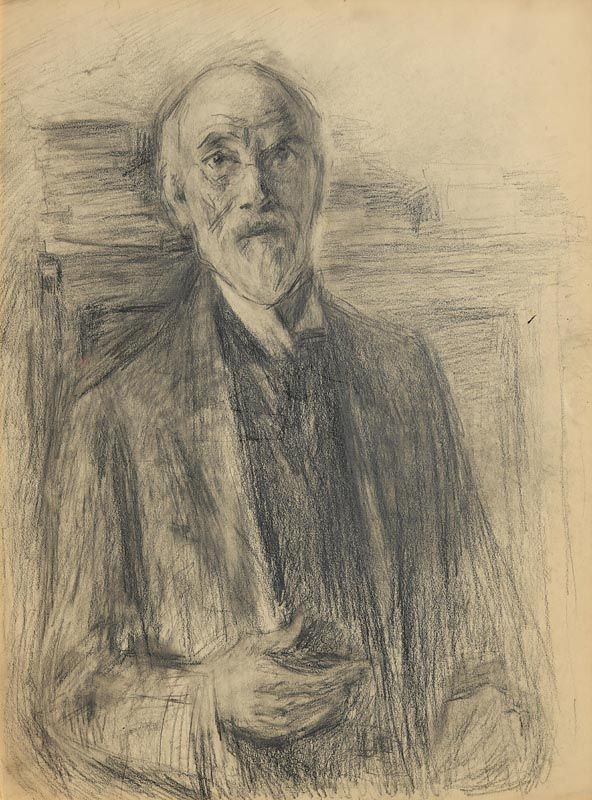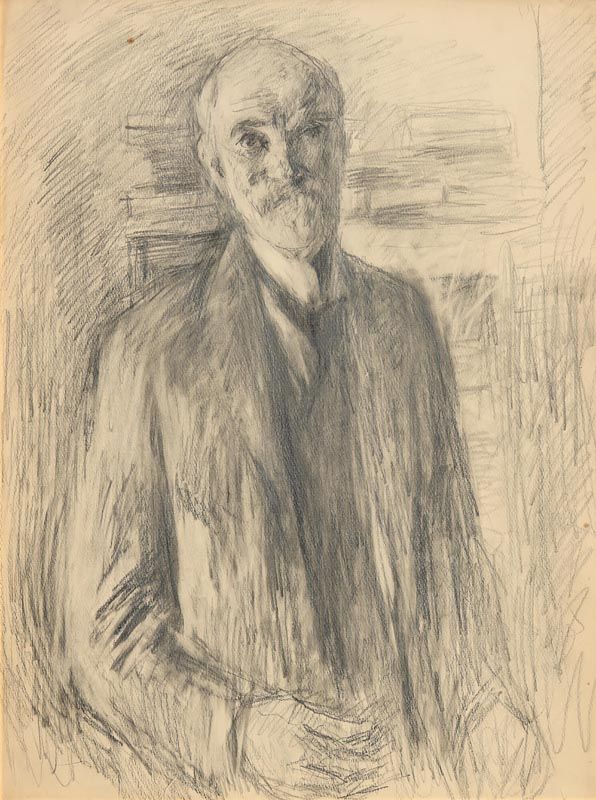For his brilliant insight into human behavior John Forbes Nash, Jr., 1994 The 1994 Nobel Prize in Economic Sciences awarded to John Forbes Nash, Jr. for his contributions to Game Theory, namely introducing the "distinction between cooperative games, in which binding agreements can be made, and non-cooperative games, where binding agreements are not feasible. Nash developed an equilibrium concept for non-cooperative games that later came to be called Nash equilibrium." NASH, JR., John Forbes (1928-2015). The Sveriges Riksbank Prize in Economic Sciences in Memory of Alfred Nobel awarded to John Forbes Nash, Jr. in 1994. 18 carat gold, 65mm diameter, 180.6 grams. Profile of Alfred Nobel facing left on obverse, with "Sveriges Riksbank till Alfred Nobels Minne 1968" (The Sveriges Riksbank, in memory of Alfred Nobel, 1968) around the upper side and the bank’s crossed horns of plenty below, reverse with the North Star emblem of the Royal Swedish Academy of Sciences, dating from 1815, with the words “Kungliga Vetenskaps Akademien” (The Royal Swedish Academy of Sciences). "J.F. Nash" engraved on the edge of medal. Housed in original red morocco gilt case, lettered "J.F. Nash," interior lined with velvet and satin. WITH : John Forbes Nash, Jr.'s 1994 Nobel Prize Diploma, two leaves, 330 x 207mm, in tan morocco gilt portfolio and original suede-lined blue cloth clamshell box; both portfolio and box gilt-lettered with recipient’s initials on upper covers; housed in original velvet pouch. 25 years ago, on 11 October 1994, The Royal Swedish Academy of Sciences decided to award the Bank of Sweden Prize in Economic Sciences in Memory of Alfred Nobel jointly to Dr. John F. Nash, Princeton University; Professor Dr. Reinhard Selten, Rheinische Friedrich-Wilhelms-Universität, Bonn, Germany; and Professor John C. Harsanyi, University of California, Berkeley, for their pioneering analysis of equilibria in the theory of non-cooperative games. A brilliant insight into human behavior The contributions to economics that garnered John Forbes Nash, Jr., a Nobel prize in 1994 began to surface around 1949, when he was all of 21 years old. What was perhaps the chief insight—the Nash equilibrium—came on the heels of several weeks crammed with exams, where the break from research had given vague ideas the chance to take shape. As a student at Princeton, Nash was spending his summers at RAND, the civilian think tank in Santa Monica. RAND was one of the first think tanks to focus on nuclear strategy, which in 1950 was a source of anxiety worldwide. Military strategists were the first to see the value in game theory and they sought to apply it to nuclear defense, from intelligence missions to bombing patterns. Where game theory had previously focused on two-person zero-sum games—e.g., win-lose scenarios that inflict the greatest amount of damage on an enemy—researchers were beginning to realize this view held limited applicability to the real world. Enter John Forbes Nash, Jr. He broadened the view from two-person zero-sum games, and provided a tremendously valuable mathematical framework within which to analyze conflict. He introduced the distinction between cooperative and noncooperative games, and demonstrated that in multi-player interactions, each player always has a dominant strategy that is a best response to other player's strategies. It was simple, it was brilliant, and it would provide a general unifying structure for analyzing social institutions of all kinds. It was a breakthrough that has been compared to those of Newton and Darwin. Fellow Laureate Roger Myerson would call it "one of the great watershed breakthroughs in the history of social science," noting that "Nash's theory of noncooperative games should now be recognized as one of the outstanding intellectual advances of the twentieth century. The formulation of Nash equilibrium has had a fundamental and pervasive impact in economics and social sciences which is comparable to that of t
For his brilliant insight into human behavior John Forbes Nash, Jr., 1994 The 1994 Nobel Prize in Economic Sciences awarded to John Forbes Nash, Jr. for his contributions to Game Theory, namely introducing the "distinction between cooperative games, in which binding agreements can be made, and non-cooperative games, where binding agreements are not feasible. Nash developed an equilibrium concept for non-cooperative games that later came to be called Nash equilibrium." NASH, JR., John Forbes (1928-2015). The Sveriges Riksbank Prize in Economic Sciences in Memory of Alfred Nobel awarded to John Forbes Nash, Jr. in 1994. 18 carat gold, 65mm diameter, 180.6 grams. Profile of Alfred Nobel facing left on obverse, with "Sveriges Riksbank till Alfred Nobels Minne 1968" (The Sveriges Riksbank, in memory of Alfred Nobel, 1968) around the upper side and the bank’s crossed horns of plenty below, reverse with the North Star emblem of the Royal Swedish Academy of Sciences, dating from 1815, with the words “Kungliga Vetenskaps Akademien” (The Royal Swedish Academy of Sciences). "J.F. Nash" engraved on the edge of medal. Housed in original red morocco gilt case, lettered "J.F. Nash," interior lined with velvet and satin. WITH : John Forbes Nash, Jr.'s 1994 Nobel Prize Diploma, two leaves, 330 x 207mm, in tan morocco gilt portfolio and original suede-lined blue cloth clamshell box; both portfolio and box gilt-lettered with recipient’s initials on upper covers; housed in original velvet pouch. 25 years ago, on 11 October 1994, The Royal Swedish Academy of Sciences decided to award the Bank of Sweden Prize in Economic Sciences in Memory of Alfred Nobel jointly to Dr. John F. Nash, Princeton University; Professor Dr. Reinhard Selten, Rheinische Friedrich-Wilhelms-Universität, Bonn, Germany; and Professor John C. Harsanyi, University of California, Berkeley, for their pioneering analysis of equilibria in the theory of non-cooperative games. A brilliant insight into human behavior The contributions to economics that garnered John Forbes Nash, Jr., a Nobel prize in 1994 began to surface around 1949, when he was all of 21 years old. What was perhaps the chief insight—the Nash equilibrium—came on the heels of several weeks crammed with exams, where the break from research had given vague ideas the chance to take shape. As a student at Princeton, Nash was spending his summers at RAND, the civilian think tank in Santa Monica. RAND was one of the first think tanks to focus on nuclear strategy, which in 1950 was a source of anxiety worldwide. Military strategists were the first to see the value in game theory and they sought to apply it to nuclear defense, from intelligence missions to bombing patterns. Where game theory had previously focused on two-person zero-sum games—e.g., win-lose scenarios that inflict the greatest amount of damage on an enemy—researchers were beginning to realize this view held limited applicability to the real world. Enter John Forbes Nash, Jr. He broadened the view from two-person zero-sum games, and provided a tremendously valuable mathematical framework within which to analyze conflict. He introduced the distinction between cooperative and noncooperative games, and demonstrated that in multi-player interactions, each player always has a dominant strategy that is a best response to other player's strategies. It was simple, it was brilliant, and it would provide a general unifying structure for analyzing social institutions of all kinds. It was a breakthrough that has been compared to those of Newton and Darwin. Fellow Laureate Roger Myerson would call it "one of the great watershed breakthroughs in the history of social science," noting that "Nash's theory of noncooperative games should now be recognized as one of the outstanding intellectual advances of the twentieth century. The formulation of Nash equilibrium has had a fundamental and pervasive impact in economics and social sciences which is comparable to that of t






.jpg)
.jpg)
.jpg)
.jpg)




/47793/Internet%20Image%201.jpg)
Testen Sie LotSearch und seine Premium-Features 7 Tage - ohne Kosten!
Lassen Sie sich automatisch über neue Objekte in kommenden Auktionen benachrichtigen.
Suchauftrag anlegen